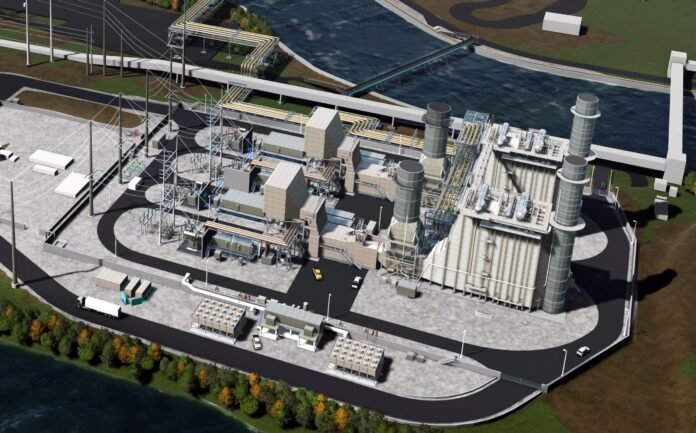Bhupinder Singh

Bentley Systems went ahead and made one of its most innovative technology into open source. Here’s why.
What if you could wave a magic wand and eliminate all the time and effort that you and your organization spent on transforming data, integrating data, and aggregating data? What if you could spend your time instead on generating insights and helping your team make decisions that can save you money and reduce risks?
When I began my career, our industry was going through the digital transformation of computer aided design or CAD, which was taking what we were doing on paper and moving it to the computer. The next disruption happened when the industry moved from CAD to building information modelling or what is known as BIM.
Now, our industry is advancing beyond BIM to infrastructure digital twins, what we refer to as iTwins. These iTwins bring in the missing dimensions of context—the physical characteristics of where the asset is on the planet, the dimension of time (nothing is static in our world), as well as other types of data such as Internet of Things (IoT) and operational data. We have gone from a document-centric workflow to model-centric workflows. And now, in the era of the digitally built environment, the next logical step is the move to data-centric workflows.
We are collectively becoming data-driven enterprises, and the organizations that are going to succeed are going to be those that can convert data into actionable information and maximize its value over the asset lifecycle.
Infrastructure data can benefit from network effects. This means that the more the people who use data, have access to the data and contribute to the data, the more valuable the data becomes. Therefore, openness and connectedness are going to be the enablers for maximizing the value of data, allowing network effects to thrive in the infrastructure ecosystem at large.
The objective, therefore should be to capture data coming from different sources like engineering technology (ET), information technology (IT), and operational technology (OT) and bring it together where it can be viewed through a single pane of glass.
We have been speaking to many practitioners to understand the barriers that stand in the way of achieving this and one of the primary challenges in orchestrating this data aggregation has been the time and effort involved in transforming and aligning proprietary and incompatible data formats.
What is needed to solve this problem is an open platform that can extract all these different types of information and integrate them seamlessly. It is not just Bentley Systems that recognizes the need for an open framework for infrastructure digital twins.
In a paper titled ‘The Gemini Principles,’ the Centre for Digital Built Britain (CDBB) identifies “openness” as the central principle for achieving “effective information management of the built environment.” Their conclusion is that open source and collaborative models build trust, reduce costs, and create value better than any other approach.
For a digital twin platform to be ‘open’, we at Bentley think that it must meet three primary criteria. First—it must be vendor neutral with regard to the applications being used. Meaning, it should not matter whether the applications used are from Bentley or from any other vendors such as Autodesk, Graphisoft, Hexagon, Trimble or Aveva. The system needs to be able to extract all this information and make it available in an open
context.

Second, the system must be open to where the files are located. It should not be expected that all the data that you need to work with should be in one homogenous, structured space or monolithic database. Connectors can be built to go find the data from where the data lives.
Third, the system must be open in terms of the semantics of the data, with the possibility to take data in its native format and should be flexible enough to be opened in a standard format where the information can be queried, interrogated, and integrated.
In June 2019, Bentley Systems released version 1.0 of the iModel.js platform on GitHub. iModel.js is an open source platform for creating, visualizing, and analyzing infrastructure digital twins. iModel.js is open, flexible and built for the cloud, web and mobile world we live in today. It establishes an open platform for you and your supply chain to build upon and to connect so that you are able to derive value from the infrastructure digital twins across all your workflows. iModel.js is written using modern cloud and web technologies and is available for building your own solutions to visualize and connect with the rest of the digital world.
You might be wondering why Bentley is willing to take its most innovative and latest technology and make it available as open source. We have done this because we have a fundamental belief that, in the long-run, an open system will be more successful in creating a thriving digital twin ecosystem for infrastructure.
Complex infrastructure projects can only benefit from a thriving, open and interconnected ecosystem of data. Data should flow freely—in and out of infrastructure digital twins, and it should be transparent and easily understandable by users. We believe it should also be easy to develop workflows that access and take advantage of the data within digital twins.
The potential for infrastructure digital twins is truly unlimited, and openness will be a prerequisite for delivering digital twins that will advance our industry beyond BIM. It will help us derive greater insights during design and construction and ultimately deliver more sustainable and resilient infrastructure during operations. In other words, for digital twins, openness wins.
Bhupinder Singh is Chief Product Officer, Bentley Systems






